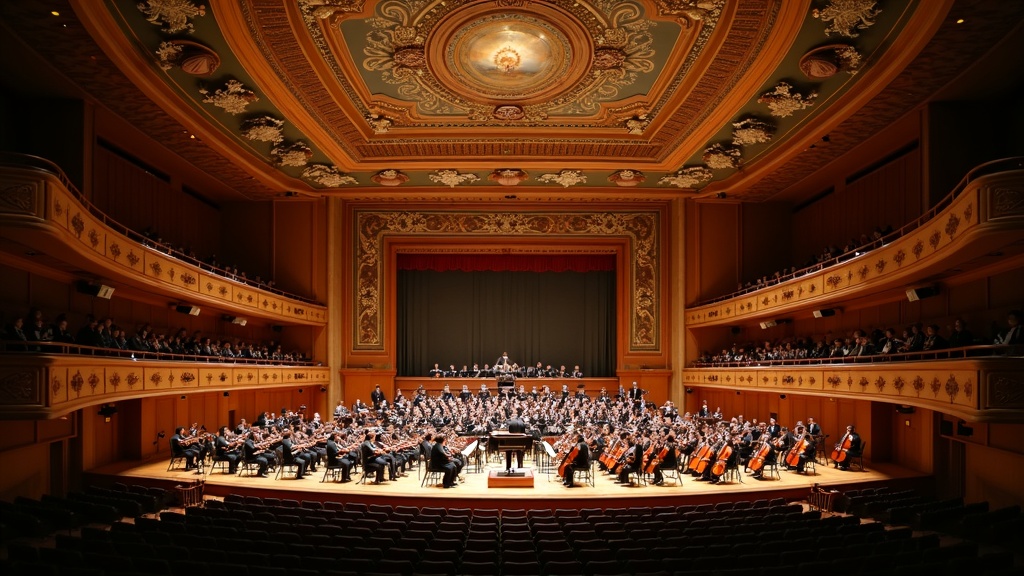Classical music brings together centuries of melodies, harmonies, and creative spirit that shaped how we experience music today. Whether you’re drawn to ancient chants, the detailed patterns of Bach, or the sweeping drama of Beethoven and beyond, tracking the adventure through the ages of classical music is pretty fascinating. I’ll walk you through the key eras, major changes, and some interesting tidbits so you can appreciate this art form with fresh ears and an open mind.

The Roots of Classical Music: Ancient Beginnings to Medieval Times
Music has always been part of human life, but what we call “classical” really started to take shape in ancient times and took its first recognizable form in the Middle Ages. Early Western music was closely tied to the church, and monasteries preserved much of it by writing music down using basic notation. This was a big deal because it let composers share tunes across regions and generations.
Chants like Gregorian chant filled cathedrals. These were all sung without much harmony or rhythm. Over time, composers started experimenting, adding multiple vocal lines. This mix led to the first steps toward polyphony, which is when more than one melody plays together, making songs much richer and more exciting.
During these times, music was largely oral, but with notation’s spread and monasteries keeping records, it became possible to share and store music more reliably. Without this tradition, many great works would have vanished over the centuries, so these early custodians really laid the foundation for everything that followed.
The Renaissance Era: Harmony and Humanism Take Center Stage
The Renaissance (about 1400–1600) celebrated art, literature, and music that put humans at the center. Composers got bold, adding more and more layers to their music. This period saw the rise of mass settings and madrigals—songs for several voices, sometimes a cappella, sometimes with upbeat rhythms.
Alongside churches, wealthier townsfolk and royals began hiring musicians. This switch let music move beyond church walls and into courts and homes. Sheet music also became easier to print and distribute, allowing musicians to track down new trends quickly and spread the word far and wide.
- Imitation: Composers loved having voices repeat each other, making the music sound more complex and woven together.
- Word Painting: Renaissance composers often wrote music that matched the moods or scenery in the lyrics. Think soaring notes for the word “heaven” or falling melodies for “tears.”
With this era’s focus on human stories, composers would blend emotional expression with technical wizardry, leaving behind some of the most hauntingly beautiful choral works and instrumental pieces we’ve ever heard.
The Baroque Era: Orchestras, Operas, and Wildly Inventive Composers
The Baroque period (about 1600–1750) brought in a bigger, bolder, and sometimes downright dramatic approach to music. If you’ve heard organ toccatas, flashy violin solos, or grand church anthems, you’ve tasted the Baroque flavor. This era is full of favorites like Bach, Handel, and Vivaldi.
Instrumental music really blossomed, and new forms like the concerto (where a soloist shines against an orchestra) and the sonata took hold. Orchestras got their start, with new instruments like the violin family becoming popular choices. Opera also made its debut, combining storytelling, singing, and orchestras into one unforgettable package.
- Basso Continuo: Baroque musicians used a steady “backbone” line, played by instruments like the cello and harpsichord, to anchor everyone.
- Expressive Contrasts: Fast, bright parts would often swap with slow, moody sections, keeping things interesting for listeners and musicians alike.
Orchestras in the Baroque period weren’t as huge as they are today, but this was when they really started coming together. The bold use of dynamics and intricate melodies set the bar for future composers, and opera’s marriage of drama and music opened a new world for audiences everywhere.
The Classical Era: Balanced Forms and Elegant Simplicity
The Classical era (about 1750–1820) is where things got more streamlined and organized. Big names here include Haydn, Mozart, and the early works of Beethoven. The music is clear and catchy, with melodies front and center and neat, balanced phrases. This is easy to spot compared to the more detailed Baroque sound.
This era put the spotlight on sonata form—a way of writing music that balances contrast and unity. Symphonies, string quartets, and piano sonatas became the backbone of concerts, and composers started writing with public performances in mind, not just for churches or royalty.
- Clear Structure: Composers used forms like the sonata and rondo, so listeners could follow along with the musical logic easily.
- Dynamics: Soft and loud moments got more variety, helping create drama without getting too over the top.
With more music being performed for ordinary people, it was important to keep things accessible and memorable. The Classical era’s focus on crisp melodies and catchy structures led to tunes that we still hum and recognize today.
The Romantic Era: Sweeping Emotions and Individual Style
Jumping into the Romantic era (about 1820–1900), you’ll find music that’s dramatic and packed with feeling. Beethoven—especially in his later works—sets the stage, and composers like Chopin, Brahms, and Tchaikovsky take it to the next level.
Here, melodies are long and emotional, and composers build huge climaxes. The orchestra got even bigger (more brass, percussion, and new instruments), and composers began breaking the rules of earlier forms to fit their personal style or tell a story.
- Nationalism: Romantic musicians often used folk tunes or rhythms from their home countries. For instance, you’ll hear Polish dances in Chopin or Russian melodies in Mussorgsky.
- Program Music: Pieces often told a story or painted a scene, like Berlioz’s “Symphonie fantastique,” which basically takes you through a wild daydream, musically.
This period was marked by a push for individuality. Emotion ruled, and composers poured their joys and sorrows into their work, making each piece feel like a personal statement. The expansion of the orchestra made it possible to achieve next-level cool effects and mood swings that listeners still love today.
The Modern and Contemporary Eras: Breaking Boundaries
Modern classical music (from about 1900) sometimes sounds totally different from older styles—sometimes even sounds weird or wild, but is also full of fresh ideas. Composers like Debussy, Stravinsky, and Schoenberg started experimenting with new scales, rhythms, and ways of organizing music.
Some moved away from traditional keys (atonality), others played with rhythms (think irregular or “shifting” pulses), while some went for lush, dreamy textures or super simple, repetitive patterns (minimalism). Technology also got in the mix, with composers using electronic instruments or blending recorded sounds with live concerts. Even now, people experiment with mixing styles from all over the world or combining classical with pop, jazz, or electronic music. There’s a ton of variety; some pieces sound wild and challenging, while others are surprisingly beautiful and simple.
Modern and contemporary composers often like to set free their imaginations, creating something totally new or reflecting the world around them. As a listener, don’t be surprised if you stumble upon a piece that breaks all the usual rules. Embrace the adventure—each new sound is a chance to widen your tastes and curiosity.
Quick Timeline: How Classical Music Grew Over Time
- Medieval: Chant-based and simple polyphony, mostly in monasteries and churches.
- Renaissance: Rich vocal harmonies, word painting, and music spreads beyond the church.
- Baroque: Rise of instrumental music, complex forms, beginnings of the orchestra and opera.
- Classical: Symmetry, clarity, catchy melodies, and standard forms like the symphony and sonata.
- Romantic: Larger orchestras, expressive melodies, storytelling, and national styles.
- Modern/Contemporary: Breaking boundaries, experimenting with sound, technology, and mixing traditions.
Common Hurdles for New Listeners
If you’re new to classical music, it can feel a bit overwhelming. Here are some things that might trip you up (and easy ways to get past them):
- Long Pieces: Some symphonies or operas last an hour or more. Sampling shorter movements or highlights is a great way to get comfortable.
- Formal Names: Titles like “Symphony No. 5 in C Minor, Op. 67” sound complicated but just mean it’s Beethoven’s fifth big orchestra piece in that key. You can always listen without worrying about the names.
- Unfamiliar Sounds: Modern works might throw in unexpected notes, sudden changes, or quirky instruments. Giving them a few listens or reading a bit about the piece can help make sense of it.
Long Pieces
I sometimes focus on one part of a long work, or find “best of” playlists online. It’s a fun way to ease in without feeling overwhelmed.
Formal Names
Most streaming apps or radio stations group pieces by mood or era, so you don’t have to be a scholar to enjoy the music. Just hit play!
Unfamiliar Sounds
Every time I listen to something new, I try to keep an open mind and let myself react honestly—even if it’s confusion or surprise, that’s part of the experience.
How to Start Exploring Classical Music
Getting into classical music is a lot like building a playlist in any genre; just follow your curiosity and taste. There are a few easy strategies to kick things off and have fun along the way:
- Find Playlists or YouTube Mixes: Many streaming services have beginner playlists focused on popular composers, relaxing pieces, upbeat symphonies, or soothing piano tracks. These collections make it easy to stumble upon favorites quickly.
- Try Music by Era: Check out what style catches your ear. Do you lean toward the clarity of Mozart, the bold excitement of Tchaikovsky, or the mysterious harmonies of Debussy?
- Go to Live Concerts: There’s nothing like hearing music in person, feeling the sound waves move through a grand hall, or watching musicians play up close. Try a local orchestra or even a string quartet for a more intimate experience.
- Read Short Notes: Most programs or albums have brief descriptions. They’re super handy for picking out what to listen for and can help you unlock the story behind the music.
- Share with Friends: Sometimes listening with others—or chatting about what you hear—opens up new perspectives and fun discoveries.
Frequently Asked Questions
Question: How do I tell what era a piece of music is from?
Answer: Listen for patterns. If it’s simple and chant-like, it’s probably Medieval. Lots of overlapping voices without strong rhythm usually means Renaissance. Drama, solo fireworks, and organ or harpsichord suggest Baroque. Balanced phrases and catchy melodies point to Classical. Emotional, sweeping lines and big orchestras are Romantic. Modern music might break all those patterns and sound experimental or unpredictable.
Question: Does classical music have to be “old”?
Answer: Not at all. While most famous composers are from centuries ago, there are plenty of contemporary composers writing today whose works fit right into the classical landscape while sounding fresh and new.
Question: What’s a “movement” in classical music?
Answer: A movement is just one “chapter” in a bigger piece. For example, a symphony usually has three or four movements; each with its own speed or mood.
Why Learning the History Matters
Tracing the history of classical music helps you spot patterns and connections between eras or composers. Understanding when and why a style changed puts more detail into what you hear and lets you enjoy even short snippets in a whole new light. For me, this context turns random listening into an ongoing discovery—like putting together the pieces of a huge musical puzzle bit by bit.
Jumping across eras or just tuning in to a favorite composer can make the listening experience both fun and rewarding. There’s always something new around the corner, waiting to be heard with fresh ears. So don’t worry if it takes a little time to warm up to some styles—the adventure is part of the fun, and the world of classical music is way more exciting and diverse than many people expect. Happy listening!
